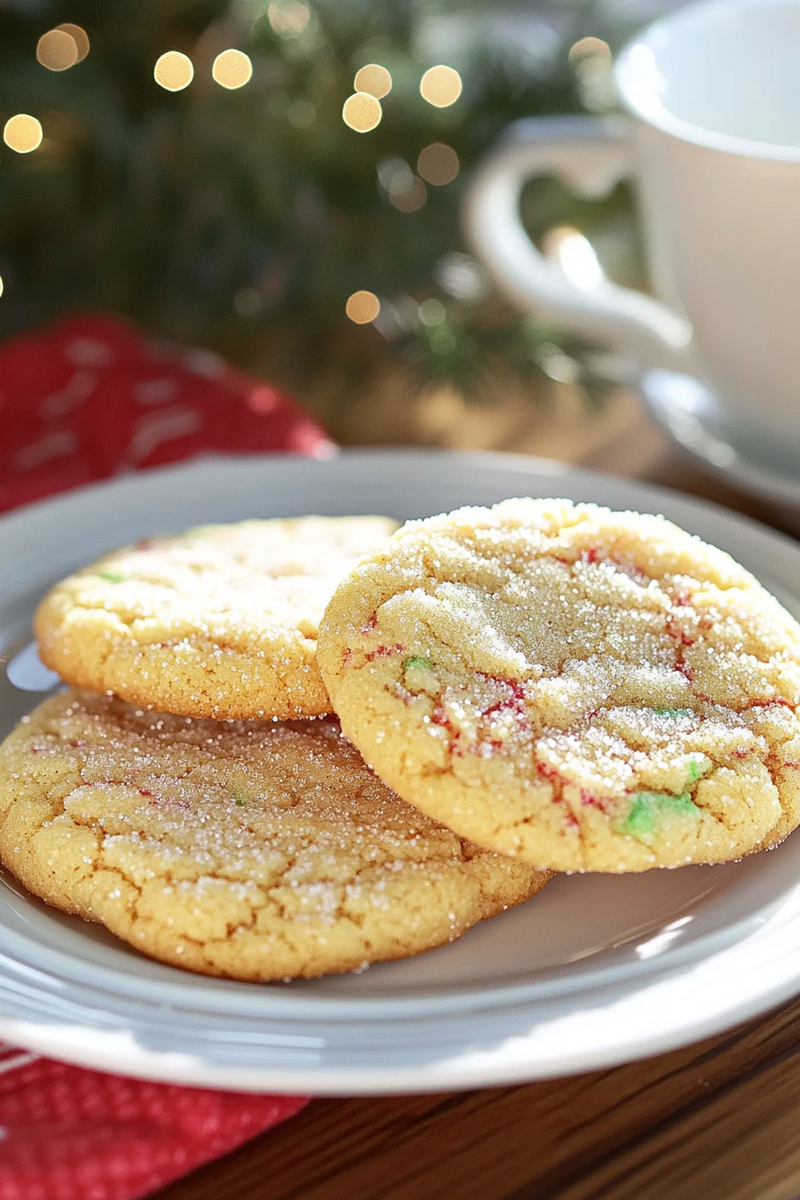Introduction and Quick Summary
If you’re craving a delightful treat that melts in your mouth, look no further than chewy sugar cookies. These scrumptious treats are simple to make and perfect for any occasion. Whether you’re enjoying them with a glass of milk or sharing them at a gathering, chewy sugar cookies will satisfy your sweet tooth like nothing else. In this article, we will guide you through the process of making these delicious cookies from scratch. With the right ingredients and a few simple steps, you can create soft, chewy sugary goodness that your family and friends will love.
What sets chewy sugar cookies apart is their unique texture and sweetness. Unlike traditional crisp cookies, these beauties offer a delightful chewiness that keeps you coming back for more. The key to achieving that perfect balance lies in using the right proportions of ingredients and baking them at just the right temperature. You’ll learn not just how to mix your dough but also some handy tips on serving and storing these treats to maintain their freshness.
So roll up your sleeves and get ready to bake! With our detailed instructions and expert tips, you’ll be serving up warm trays of chewy sugar cookies in no time. Let’s dive into the delicious world of baking!
Main Ingredients
To make the perfect chewy sugar cookies, you need a handful of simple ingredients. Each component plays a crucial role in creating that ideal texture and flavor balance.
All-Purpose Flour
All-purpose flour forms the base of your cookie dough. You’ll need about 2 ¾ cups for this recipe. It provides structure while allowing the cookie to remain soft and chewy. Make sure to measure it accurately; too much flour can lead to dry cookies. Sifting the flour can help remove lumps and aerate it for better mixing.
Granulated Sugar
Granulated sugar contributes sweetness as well as helps create that lovely crisp edge on the cookie. You should use 1 cup of granulated sugar in this recipe. Be mindful that when you cream it with butter, it incorporates air into the mixture which contributes to a lighter texture in your final product.
Brown Sugar
Brown sugar brings moisture to your dough due to its molasses content. You’ll need 1 cup packed brown sugar for this recipe. The addition of brown sugar also enhances the flavor profile by adding a rich caramel note which complements the vanilla beautifully.
Unsalted Butter
Unsalted butter is essential for flavoring your cookie dough and adds richness to each bite. Use 1 cup (2 sticks) at room temperature for easy creaming with sugars. The butter’s fat content helps keep the cookies moist while achieving that desirable chewiness.
Eggs
Eggs act as binders in your dough while adding moisture and richness. Two large eggs are required for this recipe. Make sure they are at room temperature before mixing; this will help them incorporate more smoothly into the batter.
Baking Soda
Baking soda acts as a leavening agent that helps your cookies rise slightly during baking while remaining soft inside. You only need 1 teaspoon in this recipe; too much can result in an unpleasant metallic taste.
Vanilla Extract
Vanilla extract adds depth of flavor to your chewy sugar cookies; use 2 teaspoons for optimal taste. Pure vanilla extract is preferred over imitation for a richer aroma.
Salt
A pinch of salt balances out all the sweetness in your cookie dough; use ½ teaspoon for best results without overpowering other flavors.
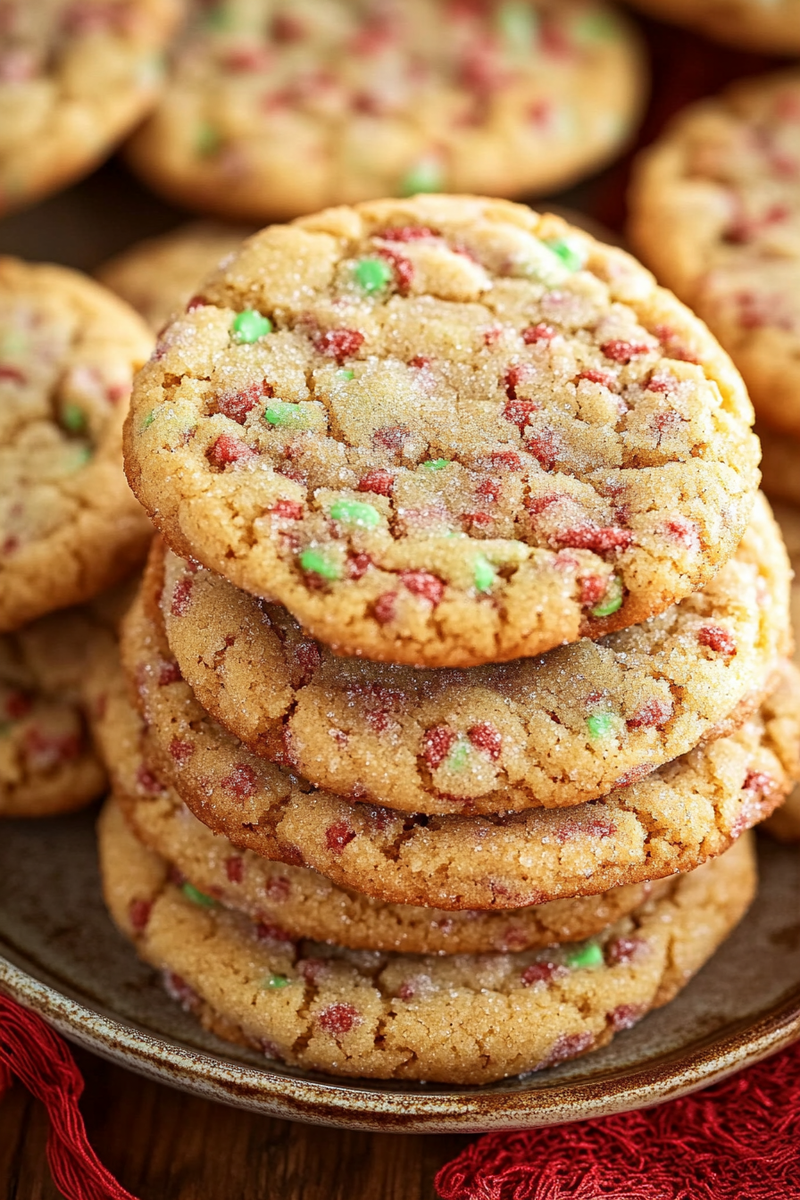
How to Prepare Chewy Sugar Cookies
With all your ingredients gathered, it’s time to start preparing those delicious chewy sugar cookies! Follow these step-by-step instructions closely for best results.
Step 1: Preheat Your Oven
Before you begin mixing your ingredients, preheat your oven to 350°F (175°C). This step is crucial because starting with a hot oven ensures even baking and helps achieve that perfect golden exterior while keeping the inside soft and chewy.
Step 2: Cream Butter and Sugars
In a large mixing bowl, add softened unsalted butter along with granulated sugar and brown sugar. Using an electric mixer or hand mixer on medium speed, cream these together until light and fluffy—about 3-5 minutes should suffice. This process introduces air into the mixture which is vital for achieving that light texture typical of great cookie recipes.
Make sure there are no lumps left from either type of sugar as they can affect both texture and appearance once baked. Scrape down any sides of the bowl with a spatula periodically so everything gets evenly mixed together.
Step 3: Add Eggs and Vanilla
Once creamed properly, add two large eggs one at a time while continuing to mix at low speed until fully incorporated between each addition—this prevents overmixing which could toughen up your cookie dough later on! Then pour in those two teaspoons of vanilla extract; let it mix until everything blends seamlessly into a velvety batter without any traces left behind from previous steps.
Step 4: Combine Dry Ingredients
In another bowl, whisk together all-purpose flour with baking soda and salt until evenly combined—this ensures no clumps form later during mixing! Gradually add this dry mixture into wet ingredients while stirring gently until just combined; do not overwork it! Overmixing leads towards tougher final products whereas we want softness here!
The mixture should appear slightly sticky but manageable enough where you can scoop out portions easily without it sticking too heavily onto utensils or hands—a sign you’ve hit perfection!
Step 5: Scoop Out Cookie Dough
Using either a tablespoon or an ice cream scoop (for larger quantities), portion out even amounts of dough onto ungreased baking sheets lined with parchment paper or silicone mats spaced apart about two inches apart from each other—this gives them room while they spread during baking! Aim for around two tablespoons per scoop unless you’d prefer smaller bites instead!
Chill these scooped-out portions in refrigeration if desired; some bakers recommend doing so particularly during warmer months when temperatures rise causing oils from butter within dough potentially melting prematurely leading towards flat cookies instead!
Step 6: Bake Your Cookies
Place trays filled with scooped-out cookie balls directly into preheated oven! Bake at 350°F (175°C) typically anywhere between ten-twelve minutes depending upon size & thickness desired; watch closely after around eight minutes mark knowing edges turn slightly golden yet centers remain puffy & underbaked slightly as they’ll firm up even after removing from heat source due residual warmth still present upon cooling down completely outside oven afterwards!
Allow cooling time anywhere between five-ten minutes prior transferring onto wire racks letting cool completely before indulging further—you’ll find patience rewarded tenfold here!
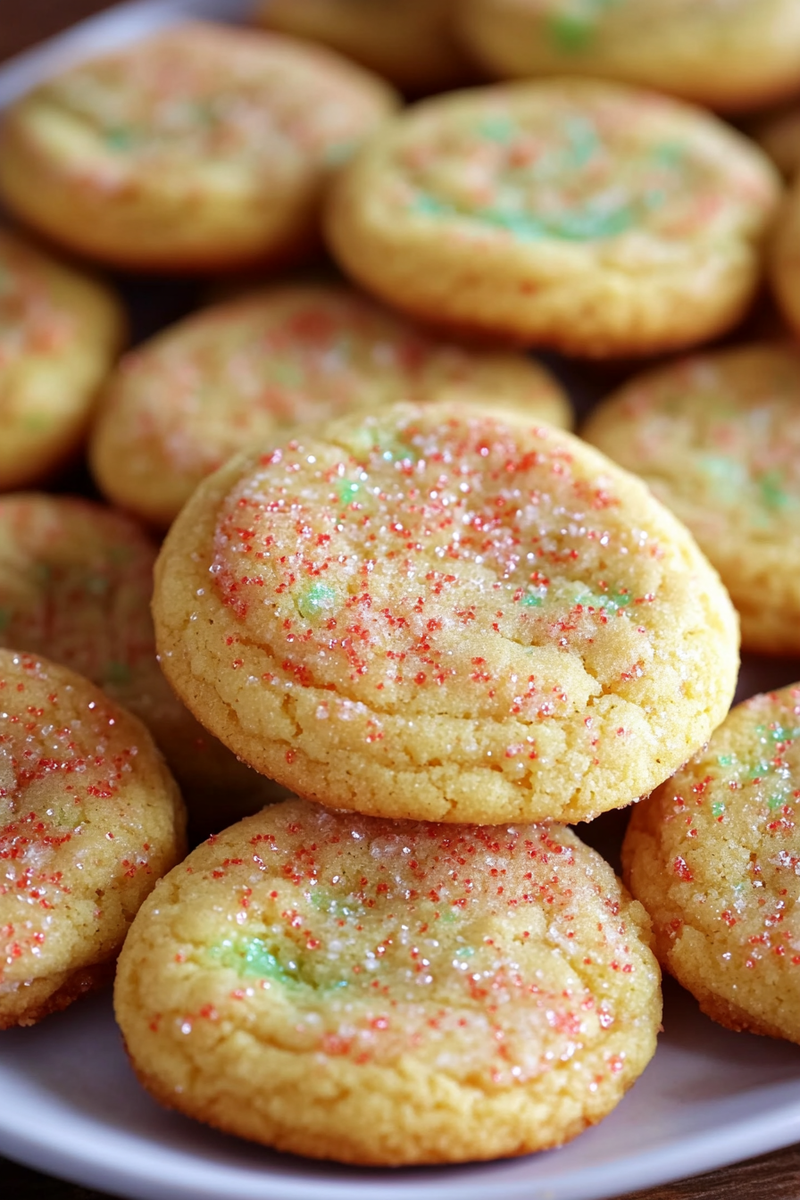
Serving and Storing Tips
Now that you’ve successfully baked those delightful chewy sugar cookies let’s discuss how best to serve them up along with proper storage tips ensuring freshness lasts longer!
Serving Suggestions
Chewy sugar cookies shine brightest when served fresh out-of-the-oven alongside beverages such as milk or coffee! They also pair well alongside ice cream making delightful sandwiches if looking something fun & creative—just take two cooled-down pieces place scoop ice cream center press together gently enjoy blissful experience altogether!
For gatherings/events consider plating them beautifully arranged atop decorative stands showcasing colors contrasting plates underneath creating visually appealing presentation overall driving attention towards their inviting aroma wafting throughout room instilling desire among guests wanting try them immediately—presentation matters greatly especially when hosting friends/family!
Don’t forget experimenting different toppings like sprinkles/chocolate chips adding extra flair customizing flavors making uniquely yours each time served special occasions throughout year giving reasons celebrate togetherness through delicious treats made lovingly by hand!
Storage Guidelines
To maintain freshness store cooled-down chewy sugar cookies inside airtight containers preferably glass/plastic ones kept away direct sunlight/heat sources prolong shelf life significantly preventing staleness setting soon afterward otherwise occurring within days otherwise unnoticed spoiling entire batch quicker than anticipated ruining efforts put forth creating initially tasty delights intended share loved ones around occasions near/far alike ensuring happiness brought forth evermore often through kindness shared via goodies provided effortlessly served simply enjoyed fully satisfied palates everywhere daily basis ensured always cherished forever remembered fondly afterward!
Following these guidelines will help ensure you enjoy every bite long after baking day has concluded leaving lasting impressions behind upon taste buds regardless circumstances encountered down road ahead always keeping memories alive firmly established thanks wonderful experiences created shared lovingly amongst family/friends alike forevermore resonating joyfully throughout lives enriched deeply good times spent making unforgettable moments happen!
Mistakes to avoid
One common mistake when making chewy sugar cookies is overmixing the dough. When you mix the ingredients excessively, you develop gluten, which can lead to tough cookies instead of soft and chewy ones. To avoid this, mix the wet and dry ingredients until just combined. This ensures your cookies remain tender.
Another frequent error is using cold butter. Cold butter does not cream well with sugar, which is essential for achieving a light and fluffy texture. Always use room temperature butter for the best results. Leave the butter out for about 30 minutes before you start baking.
Not measuring flour accurately is another mistake that can ruin your chewy sugar cookies. Too much flour can make them dense instead of chewy. Use a kitchen scale for precise measurements or spoon the flour into your measuring cup and level it off with a knife.
Baking at the wrong temperature can also affect the final product. If your oven runs hot, cookies may bake too quickly on the outside while remaining raw on the inside. Always preheat your oven and consider using an oven thermometer to ensure accuracy.
Lastly, ignoring cooling time is a big mistake. If you transfer cookies from the baking sheet too soon, they may fall apart. Let them cool on the sheet for a few minutes before transferring them to a wire rack to cool completely.
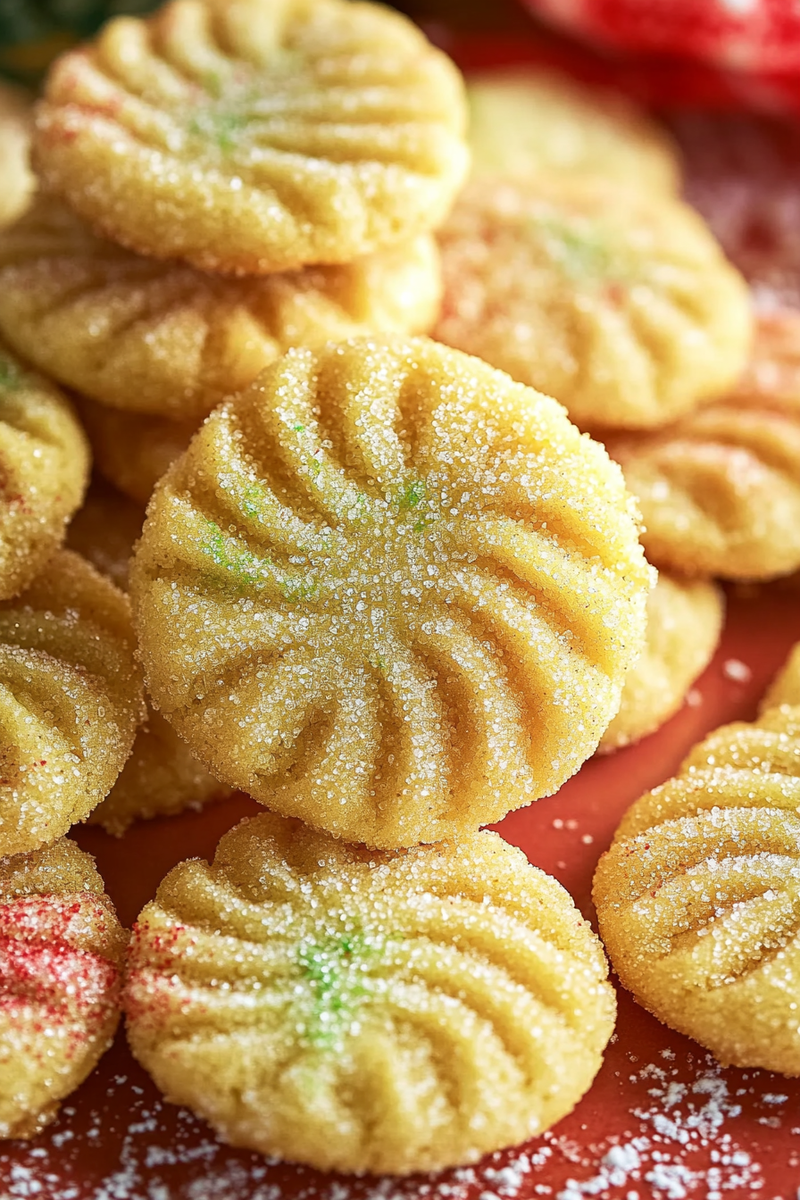
Tips and tricks
To achieve perfect chewy sugar cookies, start by chilling your dough before baking. Chilling helps the flavors meld together and prevents spreading during baking, resulting in thicker cookies that maintain their shape.
Use brown sugar rather than just granulated sugar in your recipe. Brown sugar adds moisture and chewiness due to its molasses content. A mix of both sugars can offer a delightful flavor balance and enhance texture.
Incorporating cornstarch into your cookie dough can help create an ultra-soft texture. Just one tablespoon added per cup of flour can work wonders in achieving that desirable chewiness without losing structure.
Experimenting with baking soda versus baking powder will also influence your cookie’s texture and taste. Baking soda provides a more spread-out cookie while baking powder yields thicker ones due to its leavening properties.
Lastly, don’t skip on toppings! Sprinkling coarse sea salt on top of your cookies just before baking gives them an irresistible flavor contrast that enhances sweetness while adding visual appeal.
Suggestions for Chewy Sugar Cookies
Consider using high-quality vanilla extract for improved flavor in your chewy sugar cookies. Pure vanilla extract will provide depth compared to imitation vanilla, enhancing each bite’s overall experience.
Adding an egg yolk to your dough can create richer cookies that are soft and chewy as well. The extra fat from the yolk contributes moisture, leading to a more indulgent texture without altering the overall recipe dramatically.
If you want additional flavor variations, try incorporating citrus zest like lemon or orange into your dough. This adds brightness and freshness that complements the sweetness perfectly without overwhelming it.
Mix in some chocolate chips or nuts for added texture and flavor complexity if desired. These additions bring delightful surprises in each bite while maintaining the chewy nature of sugar cookies.
Finally, always store your baked cookies correctly to maintain their softness longer. Use an airtight container at room temperature; this keeps them fresh without drying out, ensuring every cookie remains deliciously chewy.
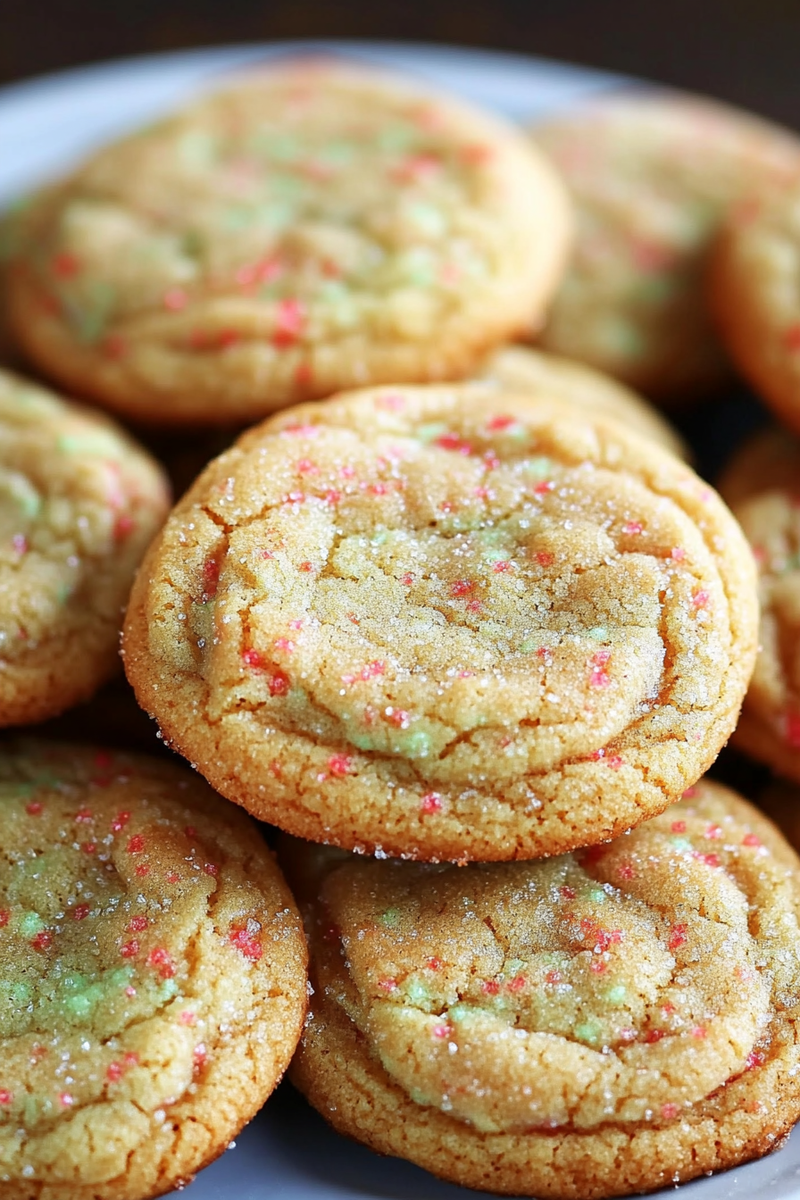
FAQs
What makes chewy sugar cookies different from regular sugar cookies?
Chewy sugar cookies differ from regular versions mainly due to their ingredients and preparation methods. Chewy recipes often include brown sugar or extra fat sources like butter or shortening, contributing moisture and tenderness. Another difference lies in mixing techniques; minimizing gluten development by mixing only until combined promotes chewiness instead of crispness found in traditional recipes.
Can I freeze chewy sugar cookie dough?
Yes! Freezing chewy sugar cookie dough is an excellent way to prepare ahead of time for future baking sessions. Shape your dough into balls, place them on a baking sheet lined with parchment paper until frozen solid, then transfer them into airtight bags or containers for storage up to three months. When ready to bake, simply add a few extra minutes onto the cooking time without thawing first!
How do I know when my chewy sugar cookies are done baking?
To determine if your chewy sugar cookies are finished baking, look for slightly golden edges while keeping centers soft and puffy—an indication they’re still moist inside! Remove them from the oven once they appear set but not overly browned; they will continue cooking slightly as they cool down on their sheets.
Can I substitute gluten-free flour in this recipe?
Absolutely! Gluten-free flour blends work well in replacing all-purpose flour when making chewy sugar cookies; however, results may vary based on brands used so testing recipes might be necessary first! For better texture consistency try adding xanthan gum according to package instructions since it mimics wheat’s elasticity without affecting taste negatively!
Is there a way to make my chewy sugar cookies softer?
You can achieve softer chewy sugar cookies by slightly underbaking them—removing them from the oven when edges just begin turning golden but centers remain pale will help retain moisture content! Additionally incorporating more eggs or using cake flour instead of all-purpose flour promotes tenderness while contributing delicious flavor profiles!
What should I do if my cookie dough feels too dry?
If you find that your cookie dough appears too dry during preparation resulting in difficulties rolling or shaping it properly—try adding one tablespoon of milk at a time until desired consistency is reached! This allows flexibility without compromising overall taste while ensuring proper texture remains intact throughout baking process!
Conclusion
In summary, creating delightful chewy sugar cookies requires attention to detail regarding ingredients as well as preparation techniques used throughout each step involved within this process! By avoiding common pitfalls such as overmixing or incorrect measuring techniques alongside implementing helpful tips like chilling dough prior will greatly influence final results achieved!
Additionally considering various suggestions including ingredient substitutions may enhance flavors significantly leading towards new culinary discoveries made through experimenting creatively within confines defined here today! Keep these considerations at heart next time you bake up batches filled with love because who wouldn’t want warm deliciousness right out of their ovens? Happy baking!

